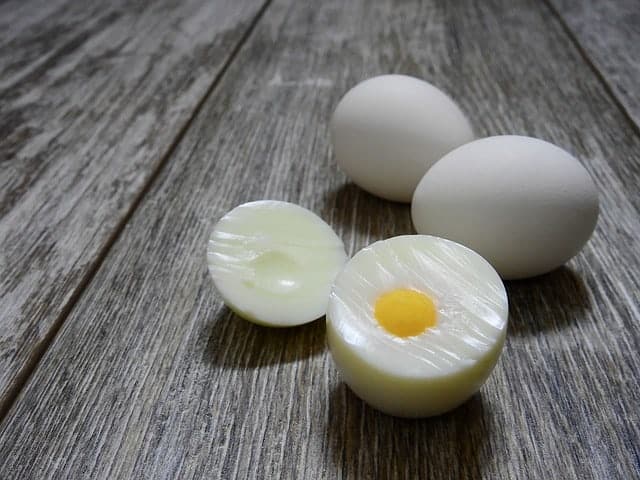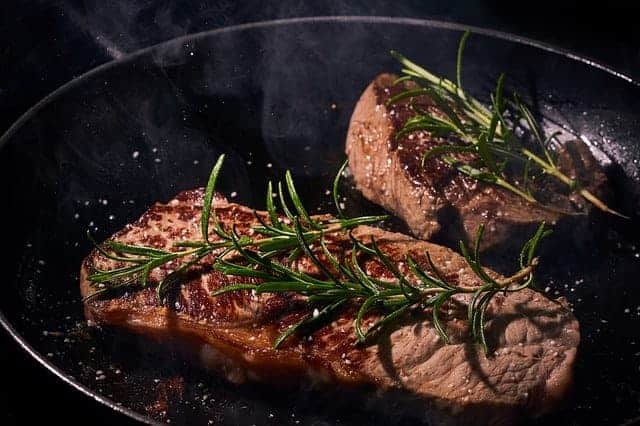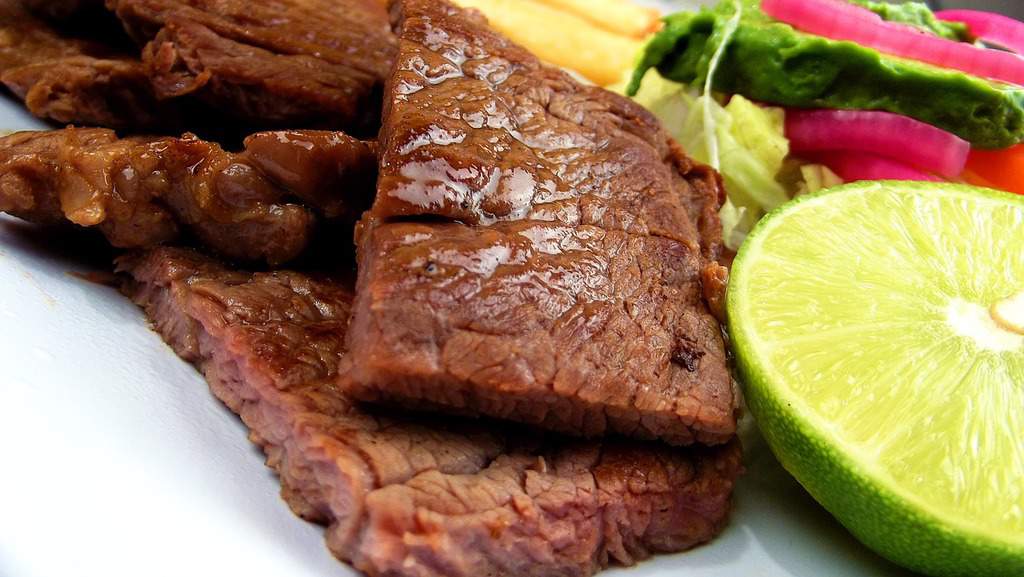The Copenhagen Diet is one of the strictest diet plans aimed at losing weight. It requires us to make many sacrifices – from drastically reducing the calories of our meals, to eliminating most products from the menu. It is a difficult diet to implement, but if you get through it, you will receive a valuable reward in the form of a noticeable slimming figure. The only question is, whether we will manage to keep the lower weight for longer. Unfortunately a common consequence of this diet, which is emphasized by many people who have followed it, is the yoyo effect. Let’s see what the Copenhagen Diet is all about, how much weight you can lose, what are the advantages and disadvantages of this weight loss plan, and then judge for yourself, whether it’s worth taking this challenge.
Table of contents
Copenhagen diet – general principles
If you are ready for a total diet regime, there is a chance that you will be able to carry out the Copenhagen diet, but if not, it’s better to look around for other weight loss systems. Copenhagen diet imposes a number of rules on us, starting from the number of calories we can consume during the day, through the number of meals, menu, and meal times. We can forget about late dinners, tasty lunches around noon or snacks before evening. We can put all our eating habits in a drawer, because here we are dealing with a strict eating plan, in which we eat exactly 3 meals a day at strictly defined times – breakfast between 8 and 9, lunch between 12 and 14, dinner between 17 and 18.
Snacking, eating extra meals (even very low calorie ones) and changing menus are forbidden. We must also give up all kinds of liquids – juices, drinks, alcohol, cocktails, fruit teas, flavored waters. The content of meals is precisely specified, there is no question of any deviation, use of substitutes or extra portions of food. The menu in the Copenhagen diet is built on the basis of only a few products, including hard-boiled eggs, lean meat and a few vegetables.
Copenhagen Diet is a 13-day diet. During this time we can lose from a few to several kilos, depending on the level of excess weight, metabolic rate and lifestyle. As this diet is very restrictive and constitutes a great burden for the body, it can be followed only once in 2 years. Daily calorie intake during Copenhagen Diet is 600-800 kcal, which is a very low value, so before we start this weight loss plan, we should consider whether our lifestyle allows us to follow such a restricted menu for 13 days.
If, for example, we have a physical job or a lot of responsibilities and we are on the run almost all day, the Copenhagen diet is not for us, because it provides too little energy. By functioning at high speed and eating 600 or 800 calories a day, we could end up exhausting our bodies and causing health complications.
It is recommended to limit activity during Copenhagen diet. We should give up not only sport for this time, but also other more physically demanding activities. Sport and high activity during Copenhagen diet can have consequences in the form of extreme fatigue, low mood, sleepiness, headaches, irritability, weakness and general worsening of mood.
Contraindications to the Copenhagen diet are:
- age under 18 years,
- old age,
- pregnancy and breastfeeding,
- hypertension, cardiovascular disease,
- liver and kidney disease,
- diabetes,
- stomach problems, digestive disorders,
- periods of convalescence,
- low immunity, poor health.

Copenhagen Diet assumes a radical restriction of fats and carbohydrates. The list of forbidden products is extremely long here, and conversely, the one with allowed products has only a few items. What’s more, there are only 3 very modest meals a day, consisting for example of a hard-boiled egg and carrots or just beefsteak. On some days the menu is even more limited – we can eat nothing for dinner or have only coffee with sugar for breakfast. Is it possible to function normally on such a diet?
Products prohibited on the Copenhagen Diet:
- bread (except one toast, which we can eat on the 3rd, 6th, 10th and 13th day of the diet),
- sweets, sugar,
- salty snacks,
- ready meals,
- sauces, mayonnaise,
- juices, drinks, alcohol,
- cereals, bran,
- groats, rice, pasta,
- potatoes,
- legumes,
- all cheeses except natural cottage cheese,
- fruit yogurt, homogenized cheese, dairy desserts,
- cream, milk, butter,
- all meats except lean beef and chicken breast fillet,
- most cold cuts (except lean ham),
- prepared seasoning mixes,
- salt,
- chewing gum.
Products allowed on the Copenhagen diet:
- lean beef and chicken breast,
- lean fish (trout, sole, cod),
- hard boiled eggs,
- small amounts of fruit,
- vegetables (spinach, broccoli, tomatoes, carrots, lettuce),
- lean ham,
- natural yogurt,
- herbs,
- mineral water in large quantities (at least 2 l of water a day).
We do not create our own culinary compositions from the allowed products, but we consume them in accordance with a predetermined menu, which you will find below.
The meals are small, often repetitive, homogeneous and ascetic (e.g. at one meal you eat only 200 g of meat and a few lettuce leaves, or just grated carrots with lemon juice). We can’t add any products to meals or swap menus between days (what I’m supposed to eat today, I’ll eat tomorrow, and what I’ll eat tomorrow, I’ll eat today). The only modification we can make is to reverse the order of meals within a day, i.e., eat the lunch set in the morning and the morning set for lunch, etc. Here is the exact menu:
Day 1 (we repeat the menu on day 8)
- Breakfast: a cup of black coffee with a sugar cube
- Lunch: 2 hard-boiled eggs, 1 tomato, 1 cup of cooked spinach or broccoli
- Dinner: beefsteak about 200 g (from leaner beef), a few lettuce leaves or salad mix with a tablespoon of olive oil and lemon juice
Day 2 (the menu is repeated on day 9)
- Breakfast: a cup of black coffee with a sugar cube
- Lunch: beefsteak, some lettuce leaves with a spoon of olive oil and lemon juice, 1 fruit of your choice
- Dinner: 1 thick slice or several thin slices of lean ham, half a glass of natural yoghurt
Day 3 (the menu is repeated on day 10)
- Breakfast: a cup of black coffee with a sugar cube, 1 toast from a slice of bread (preferably wholemeal)
- Lunch: 1 glass of cooked spinach, 1 tomato, 1 fruit of your choice
- Dinner: 2 hard-boiled eggs, 1 thick slice or several thin slices of lean ham, several lettuce leaves or salad mix with 1 tablespoon of olive oil and lemon juice
Day 4 (the menu is repeated on day 11)
- Breakfast: a cup of black coffee with a sugar cube
- Lunch: 1 hard boiled egg, 1 large grated carrot, cottage cheese or cottage cheese (approx. 150 g)
- Dinner: about half a glass of sugar-free compote (compote should be consumed together with fruit), less than a glass of natural yoghurt
Day 5 (the menu is repeated on day 12)
- Breakfast: 1 large grated carrot with lemon juice
- Lunch: lean fish (approx. 300 g) seasoned with lemon juice and herbs (e.g. basil) steamed or fried without fat
- Dinner: beefsteak, a few lettuce leaves, a few heads of boiled broccoli
Day 6 (the menu is repeated on Day 13)
- Breakfast: cup of black coffee with sugar cube, 1 toast from a slice of bread (preferably wholemeal)
- Dinner: braised chicken breast, a few lettuce leaves with 1 spoon of olive oil and lemon juice
- Dinner: 2 hard-boiled eggs, 1 large grated carrot
Day 7
- Breakfast: tea
- Lunch: grilled or stewed chicken breast, fruit of your choice
- Dinner: nothing
To avoid nutrient deficiencies, we can use vitamin supplements in parallel with the diet. For many people following the Copenhagen diet, the optimal option are special supplements for slimmers, composed in such a way as to suppress appetite, increase the feeling of satiety, and at the same time, thanks to valuable plant extracts, provide vitamins and macro- and microelements important for our body.
SUPPLEMENTS FOR SLIMMING RANKING
Many fans of the Copenhagen diet are looking for ways to break its monotony, but this is not easy because of the small range of products allowed and strict recommendations on the shape of the menu. Certainly you can introduce some variety and create your own version of the Copenhagen diet, but it is worth remembering that our substitutes should have similar nutritional value (e.g. comparable amounts of fats, proteins and carbohydrates, vitamins, minerals) and similar calories to the authentic products.
Let’s say, instead of spinach and broccoli, we can use kale, green beans, eggplants, zucchini, and instead of traditional pork ham, chicken or turkey ham or sirloin. Grated carrots can be varied with grated celery, parsley or kohlrabi.
When it comes to fruit, the Copenhagen Diet gives you the freedom to reach for different products in this category each time to break the culinary routine. When it comes to a regular on the menu, namely eggs, it will be hard to find a decent substitute for them. They are the backbone of the diet and provide a substantial portion of protein and other important nutrients. So it’s not worth giving them up, but you can prepare classic hard-boiled eggs in a different way – make a paste of them (with a bit of olive oil or yogurt and herbs such as chives, dill or basil) and serve on a leaf of lettuce, or prepare a salad with tomato or green cucumber. Some people also replace hard-boiled eggs with poached ones.
A big problem for many people is also beef, which often appears in the menu. Not everyone likes it and not everyone has easy access to it. Can beefsteak be replaced with something else? On the one hand, we should not use substitutes, because eating such a beef steak we provide our body with a lot of complete protein, a lot of iron and several other essential nutrients, thus we protect ourselves from their deficiencies and deterioration of health.
On the other hand, a large chicken or turkey breast steak also provides a substantial portion of complete protein, minerals and vitamins. Admittedly, chicken or turkey breast contains slightly less iron than beef, but we can compensate for this discount by eating plenty of green vegetables, e.g. parsley, kale, chard and fresh spinach leaves. They are low in calories and very rich in nutrients.
To sum up, the Copenhagen Diet with chicken or turkey instead of beef can be a good choice, but remember to eat large portions of meat (about 200-250 g for 1 steak) and at the same time eat leafy vegetables rich in bioelements.
Copenhagen diet effects

Copenhagen Diet usually attracts people who are strongly determined to lose weight, and those who do not like to wait for weeks for results, but prefer to see changes in their body almost immediately. This diet can provide them with that, but does it last long? This is a separate question. Most people who manage to complete the diet, notice a weight loss of about 5-10 kg. Sometimes they manage to lose even more weight, about 12-15 kg, but this applies mainly to people who are very overweight.
Significant weight loss is the result of a radical cut in carbohydrates in the diet, elimination of salt, unhealthy foods that disrupt metabolism and a general reduction in the calorie content of meals. Meals suddenly start to provide us with more than half the energy, so our body begins to reach for fat reserves. However, it is not fat, but water that “escapes” most rapidly from our body. Getting rid of the accumulated subcutaneous water, we lose weight intensively, which can be misinterpreted by us as a decrease in the level of fat tissue. Unfortunately, a full reduction of body fat requires more long-term actions than a two-week radical diet.
In short, at the end of the Copenhagen diet we will be several kilograms lighter, a large percentage of which will be water and less fat. It is worth noting something else, namely, in many cases the effects of Copenhagen diet are unfortunately not permanent. After such a strict fast, the body demands food and quickly starts to accumulate water and fat reserves again, which translates into weight gain, which often becomes even higher than before the diet.
Copenhagen diet – advantages and disadvantages
Undoubtedly, the Copenhagen diet is not a diet that everyone would decide to do. It is much more taxing and difficult to follow than other weight loss plans, such as the tomato diet, the 1500 kcal diet, the oatmeal diet or the South Beach diet. Nevertheless, it has several advantages that make it still quite popular.
Advantages of the Copenhagen diet:
- It is short, lasting only 13 days.
- It leads to rapid weight loss.
- It is easy, no need to prepare fancy dishes.
- Does not require a large financial outlay.
- Helps to get rid of subcutaneous water.
- Leads to shrinking of the stomach, thus helps to limit the amount of food consumed.
Disadvantages of the Copenhagen diet:
- Imposes too radical a calorie cut (600 or 800 kcal a day is not enough for our body to function properly).
- The diet plan lacks decent breakfasts. Breakfast is the basic meal that should give you the feeling of satiety, provide energy for a long time and “kick-start” your metabolism for the whole day (on the Copenhagen Diet most days for breakfast you only drink coffee with sugar, which yes, gives you some energy, but only for a short time).
- It is very monotonous. It is very monotonous and the meals are not very varied, which can make you feel discouraged.
- Does not provide a feeling of satiety, makes us hungry all the time.
- Contains too few vitamins, minerals, leads to nutritional deficiencies.
- May lead to a slower metabolism.
- Causes deterioration of mood, makes us feel apathetic, constantly tired.
- Causes problems with concentration, adversely affects the work of the brain (for white-collar workers it can be a big problem).
- During its duration you have to resign from sport and other more intensive forms of activity.
- It may cause loss of muscle tissue.
- Causes a number of ailments such as: headaches, dizziness, weakness, hair loss, deterioration of the skin.
- It is not a diet for everyone, it is designed only for people with impeccable health, it is not suitable for people who are too young or too old.
- It is often followed by a yo-yo effect.
Copenhagen diet – opinions
What we certainly will not find among the opinions on the Copenhagen diet, is unanimous acclaiming it a successful or unsuccessful diet. As many votes for, as many against. Supporters of this diet emphasize that yes, you have to work hard, make a lot of sacrifices and deal with energy loss and deterioration of mood, but the effects in the form of 5, 7 or even 10 kg less are worth it.
Opponents of the Copenhagen diet are of the opinion that it’s not worth putting your body through such a strain and risking health complications, when there are so many more affordable and simpler forms of slimming available, which although require more time, give more lasting results.
Copenhagen diet recipes

There is great culinary simplicity in the Copenhagen diet, as evidenced by the following recipes:
Ingredients:
- piece of approx. 200 g lean beef
- lemon juice
- thyme, oregano
- ground black pepper
- 1 tbsp olive oil
Preparation:
Lightly break the beef steak with a pestle. Rub with herbs, pepper and lemon juice. Leave for several minutes. Put the meat into a hot frying pan greased with olive oil. Fry for about 5 minutes on each side.
Simple recipe for spinach on the Copenhagen Diet
Ingredients:
- half a packet of frozen spinach or several large handfuls of fresh spinach
- Lemon juice
- thyme
- a clove of garlic
Preparation:
Pour a small amount of water into a saucepan, throw in the spinach, simmer over low heat for a few minutes. Season with lemon juice, thyme and crushed garlic, stir and stew for a while. To add variety we can add chives, dill or chopped tomato.

